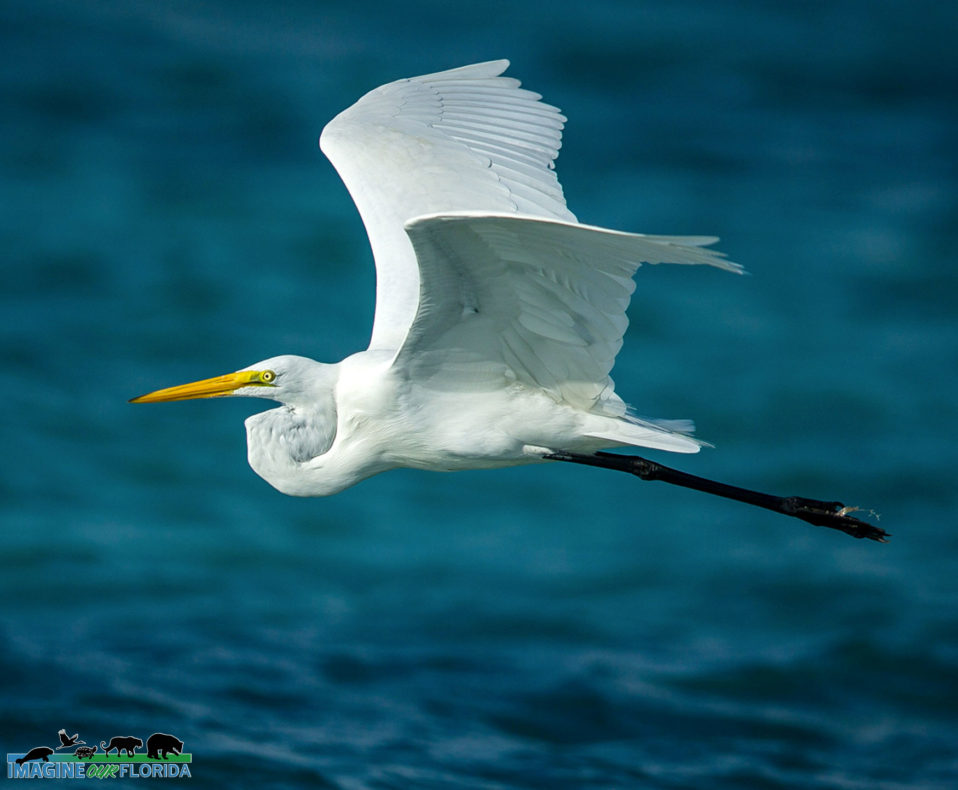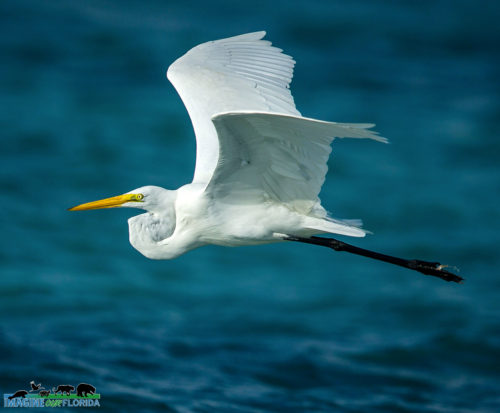The Great Egret, Ardea alba, is a year-round resident in Florida’s wetlands. It is a regal bird that struts proudly while showing off its a long yellow beak and bright white plumage atop ebony legs. In flight, the Great Egret boasts a wingspan of up to 57 inches and gracefully cruises through the sky at 25 miles per hour.
Great Egrets primarily hunt while standing or wading in freshwater, brackish water, or saltwater. Small fish make up most of their diet but they snack on reptiles, amphibians, shrimp, dragonflies, birds, and small mammals.
During the breeding season, you will find colonies of Great Egrets nesting in treetops near water. Males will begin building the nest before pairing with a female. During this time, a green neon patch of skin appears on the Great Egret’s face and long billowy white plumes emerge from its back in anticipation of courtship.
The monogamous couple will complete the nest and the female will produce a clutch of 1-6 eggs. Hatchlings appear in 23-27 days and remain in the nest for up to 25 days. Not all of the chicks will survive the sibling rivalry in the nest as the dominant chick may stab the weaker ones.
More than 95% of Great Egrets were killed when hunted for their plumes. In 1910, plume-hunting was banned and the US population is now considered stable.
Current threats include habitat loss and degradation as well as runoff from sewage and farms. Together, we can advocate for the protection and preservation of the wild spaces where Great Egrets thrive.


 gr
gr

 eat
eat
Recent Comments